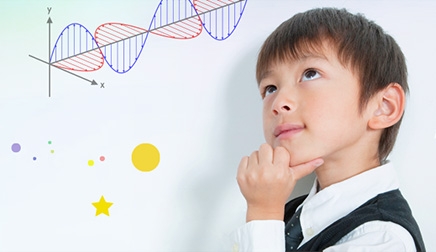 Home > Light-based technology > Making, measuring and manipulating light
Home > Light-based technology > Making, measuring and manipulating light
Making, measuring and manipulating light

The microwave, cell phone, and PC and televisions we have around us, and other convenient devices such as automatic doors, ATM machines, vending machines, and automobiles to name just a few. All of these consist of precision devices and components using technology of light also called photonics. Well then, what exactly is photonics? Let’s take a look along with the fundamental keywords, “Make,” “Measure” and “Manipulate”.
Making light
We use light everywhere in our daily lives, including product manufacturing and inspection, medical treatment, analysis, and information communication.
However, light cannot be stored in a box or carried around in a bag. We have to create the light that we want whenever we want to use. Well then, how do we go about making light?
Light is a wave called an electromagnetic wave that is a combination of magnetic field and electric field. Such a wave can be created by moving electrons.
For example, the light made by moving electrons in a device called an accelerator is synchrotron light (known as synchrotron radiation) that is used for analyses of various types of objects and development of materials and so on.
Light such as traditional incandescent light is created by utilizing heat to oscillate electrons within atoms or molecules. Light from LED and laser light are made by a method using external energy to change the energy of electron within the atoms, and used in a wide range of applications from lighting and displays, processing of products, to medical treatment and the recent art like a projection mapping.



Measuring light
By measuring the light directly emitted from objects or the light reflected, scattered or transmitted after illuminating an object, we extract and utilize various kinds of information about the object including its size, color, distance, components, status and properties.
Technology of measuring light is mainly incorporated as light sensing device called optical sensors into various types of equipment. A typical method for measuring light by optical sensors is to convert the light into electricity and measure the electric current. The ejection of electrons from a material by light irradiation is referred to as photoelectric effect, and the “photocathode” and “semiconductor” are used as the materials to indicate the photoelectric effect.


Manipulating light
The reflective and refractive properties of light allow changing its travel direction by using mirrors, lenses, and prisms. By controlling or correcting the direction of light in this way, we make more effective use of light. The mirrors that we all use every day reverse the direction of light 180 degrees to show us an image of ourselves and so can be called a simple optical device.
Moreover, the camera or our eyes perform the task of “focusing” by refracting light that enters lenses (crystalline lenses) and conversing it on a single point to correctly make an image.
Recently, a device called a spatial light modulator has been used to create optical patterns dynamically, and the artificial materials such as metamaterials and photonic crystals have been used to manipulate light in ways beyond the existing common knowledge, gathering attention as new methods for controlling light.



Mr. OHTAKE

Mr. OHSUKA






